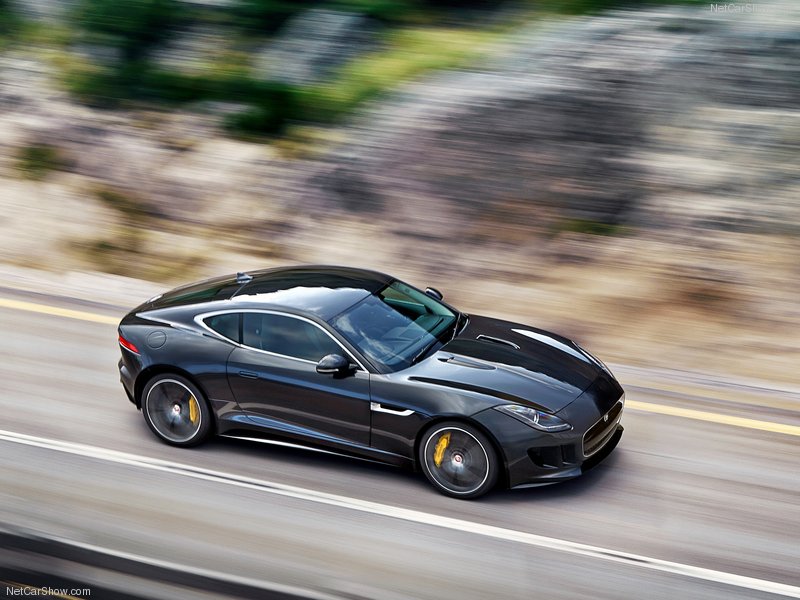It’s the Jaguar F-Type made better and even more beautiful. Some eyes out there might genuinely prefer the Brit brand’s two-seat sports car in convertible form. That’s fine, but the arch of the coupe’s roof line and the way its cabin tapers into the car’s tail emphasizing its deep-drawn aluminum haunches adds an extra point of visual appeal.
The car’s ogle zone is also a technical triumph. Jaguar engineers claim the F-Type coupe’s single-piece side pushes aluminum-stamping technology to the absolute limit. No other carmaker could cold-form such an extreme shape, they say. The side panels also happen to conceal other important aluminum pieces: Behind the curving roof rails hydroformed beams tie the car’s front and rear together, structurally speaking. According to vehicle line director Ian Hoban the F-Type Coupe is 80 percent stiffer in torsion than the convertible. It’s also the stiffest production car ever from Jaguar “by some margin.”
It would be criminally negligent to not take advantage of such outstanding rigidity; that’s why the top-line F-Type Coupe wears an R designation. This signifies the more-powerful engine and extra handling-enhancement technology compared to the S V8 convertible.
Big carbon ceramic brakes are a $10,000 option. The superior stoppers are also optional in the S Coupe. The S uses a supercharged 3.0-liter V6 developing 375 hp at 6,500 rpm and 339 lb-ft between 3,500 and 5,000 rpm. Only the basic F-Type Coupe, equipped with a 335 hp and 332 lb-ft version of the supercharged V6, cannot be had with the pricey carbon brakes.
Both V6-powered F-Type Coupes are priced $4,000 less than their convertible equivalents. In contrast the R Coupe and its extra horsepower and clever differential, is $5,000 more than the F-Type S V8 Convertible.
Whether paying more or less than for a Convertible, the Coupe customer is buying a more practical car. The hardtop F-Type has a much more spacious cargo compartment than the soft-top, making it a more practical touring car. Packed to use every bit of space beneath the tailgate’s glass, the Jag can accommodate 14 cubic feet. This shrinks to 11 cubic feet if luggage is packed no higher than the parcel shelf. Not a lot, but way more than the Convertible’s paltry 7 cubic feet.
Jaguar engineers on hand at the event insisted the prototype’s powertrain and chassis were 100 percent representative of the finished product. The only work remaining involved completing the diagnostic system software and fine-tuning panel fit, they said.
Right from the first application of accelerator pressure, it’s apparent the car is a beast. Jaguar’s 0-60 mph claim is 4.0 seconds, just 0.2 seconds less than the S V8 Convertible. Thing is, the British coupe doesn’t feel much slower round a racetrack than vastly more expensive supercars sharing its front-engine-and-rear-drive layout. Ferrari’s F12 Berlinetta, for example.



